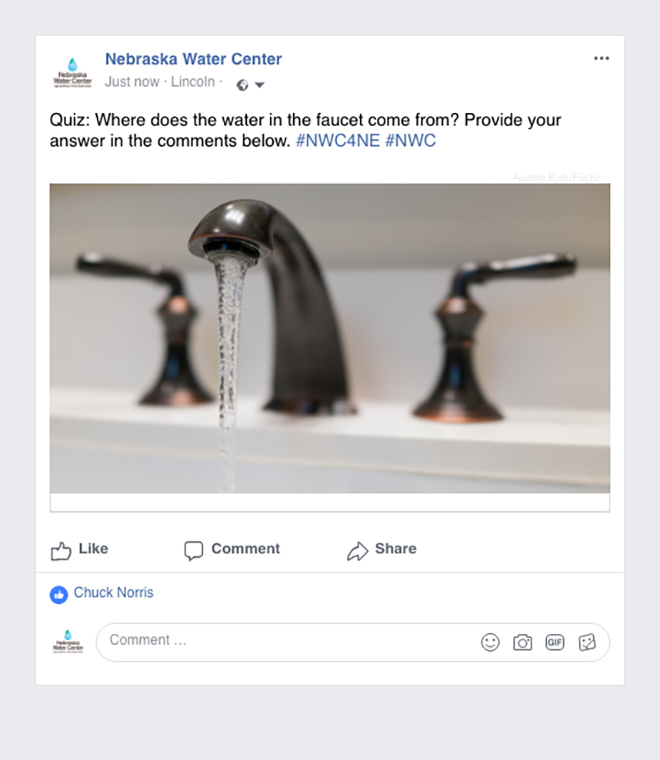


Nebraska Water Center Social Media Campaign
For this project, I was tasked with creating a weekly social media campaign for the Nebraska Water Center (NWC). The purpose of the campaign was to focus on making the Facebook, Twitter, and YouTube social media accounts more useful to the organization. This campaign focused around promoting upcoming events for the center, educating the public and water professionals, and increasing interest in classes offered at UNL.
Four goals were set that were Specific, Measurable, Achievable, Relevant and Timely (SMART).
- Provide ongoing water education, with the ultimate goal of getting water professionals to sign up for a Nebraska Water Center (NWC) event, which should result in a 10% increase in registration from social media sources, during the registration period.
- Educate the public more about how NWC helps Nebraskans, and drive 10% of traffic (Click-through rate) to NWC website using engaging social content, during a 1-month campaign.
- Promote upcoming events with engaging content that results in a 5% increase in engagement on social media posts, during lifetime of event promotion.
- Increase student interest in the classes and majors offered at UNL by driving traffic either to NWC website or UNL water program website. Success measured by driving 5% of post traffic to website between May 1 and end at the beginning of fall semester.
Four target audiences were identified for the social media campaign.
- Nebraskans and members of the public
- Potential students
- Water professionals
- University researchers
After the audiences were identified, needs were identified for each audience, and a key message that would meet these needs were identified. The competing organizations were also identified and analyzed to determine ways to improve the Nebraska Water Center’s social media communications.
Once the needs for the Nebraska Water Center were identified, a social media editorial calendar was developed to identify the general topic for each social media post during the week. These topics would align with one of the SMART goals and also specify the platform, date and time of the posting.
Finally, using the information from the social media editorial calendar, a social media content calendar was developed to identify the text, photos and hashtags to use for each social media posting. The content calendar contains the actual content that will be posted on the specified date and time.
After the campaign had been created and implemented, the final step is to evaluate the results. Key progress indicators, such as the amount of engagement on the posts were measured and analyzed to learn from for creating future social media campaigns.